Biography
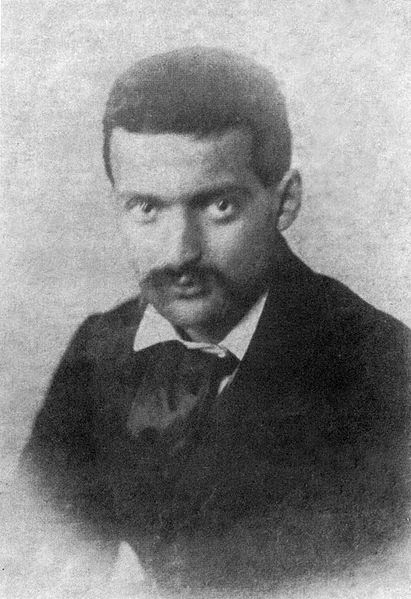
Paul Cézanne ( 1839–1906) was a French artist and Post-Impressionist painter whose work laid the foundations of the transition from the 19th-century conception of artistic endeavour to a new and radically different world of art in the 20th century. Cézanne's often repetitive, exploratory brushstrokes are highly characteristic and clearly recognizable. He used planes of colour and small brushstrokes that build up to form complex fields. The paintings convey Cézanne's intense study of his subjects.
Cézanne can be said to form the bridge between late 19th-century Impressionism and the early 20th century's new line of artistic enquiry, Cubism. Both Matisse and Picasso are said to have remarked that Cézanne "is the father of us all."
Early years and family
The Cézannes lived in the town of Cesana now in West Piedmont, and the surname is probably of Italian origin. Paul Cézanne was born on 19 January 1839 in Aix-en-Provence, in Provence in the South of France. On 22 February, Paul was baptized in the Église de la Madeleine, with his grandmother and uncle Louis as godparents. His father, Louis-Auguste Cézanne (1798–1886), was the co-founder of a banking firm that prospered throughout the artist's life, affording him financial security that was unavailable to most of his contemporaries and eventually resulting in a large inheritance.
Femme au Chapeau Vert (Woman in a Green Hat. Madame Cézanne.) 1894–1895
His mother, Anne Elisabeth Honorine Aubert (1814–1897). was "vivacious and romantic, but quick to take offence". It was from her that Cézanne got his conception and vision of life. He also had two younger sisters, Marie and Rose, with whom he went to a primary school every day.
At the age of ten Paul entered the Saint Joseph school in Aix. In 1852 Cézanne entered the Collège Bourbon (now Collège Mignet), where he met and became friends with Émile Zola, who was in a less advanced class, as well as Baptistin Baille—three friends who came to be known as "les trois inséparables" (the three inseparables). He stayed there for six years, though in the last two years he was a day scholar. In 1857 he began attending the Free Municipal School of Drawing in Aix, where he studied drawing under Joseph Gibert, a Spanish monk. From 1858 to 1861, complying with his father's wishes, Cézanne attended the law school of the University of Aix, while also receiving drawing lessons.
Going against the objections of his banker father, he committed himself to pursuing his artistic development and left Aix for Paris in 1861. He was strongly encouraged to make this decision by Zola, who was already living in the capital at the time. Eventually, his father reconciled with Cézanne and supported his choice of career. Cézanne later received an inheritance of 400,000 francs (£218,363.62) from his father, which rid him of all financial worries.
Cézanne the artist
In Paris, Cézanne met the Impressionist Camille Pissarro. Initially the friendship formed in the mid-1860s between Pissarro and Cézanne was that of master and disciple, in which Pissarro exerted a formative influence on the younger artist. Over the course of the following decade their landscape painting excursions together, in Louveciennes and Pontoise, led to a collaborative working relationship between equals.
Cézanne's early work is often concerned with the figure in the landscape and includes many paintings of groups of large, heavy figures in the landscape, imaginatively painted. Later in his career, he became more interested in working from direct observation and gradually developed a light, airy painting style. Nevertheless, in Cézanne's mature work there is the development of a solidified, almost architectural style of painting. Throughout his life he struggled to develop an authentic observation of the seen world by the most accurate method of representing it in paint that he could find. To this end, he structurally ordered whatever he perceived into simple forms and colour planes. His statement "I want to make of impressionism something solid and lasting like the art in the museums", and his contention that he was recreating Poussin "after nature" underscored his desire to unite observation of nature with the permanence of classical composition.
Life and work
Early years and family
The Cézannes lived in the town of Cesana now in West Piedmont, and the surname is probably of Italian origin. Paul Cézanne was born on 19 January 1839 in Aix-en-Provence, in Provence in the South of France. On 22 February, Paul was baptized in the Église de la Madeleine, with his grandmother and uncle Louis as godparents. His father, Louis-Auguste Cézanne (1798–1886),[6] was the co-founder of a banking firm that prospered throughout the artist's life, affording him financial security that was unavailable to most of his contemporaries and eventually resulting in a large inheritance.
His mother, Anne Elisabeth Honorine Aubert (1814–1897), was "vivacious and romantic, but quick to take offence". It was from her that Cézanne got his conception and vision of life. He also had two younger sisters, Marie and Rose, with whom he went to a primary school every day.
At the age of ten Paul entered the Saint Joseph school in Aix. In 1852 Cézanne entered the Collège Bourbon (now Collège Mignet), where he met and became friends with Émile Zola, who was in a less advanced class, as well as Baptistin Baille—three friends who came to be known as "les trois inséparables" (the three inseparables). He stayed there for six years, though in the last two years he was a day scholar. In 1857 he began attending the Free Municipal School of Drawing in Aix, where he studied drawing under Joseph Gibert, a Spanish monk. From 1858 to 1861, complying with his father's wishes, Cézanne attended the law school of the University of Aix, while also receiving drawing lessons.
Going against the objections of his banker father, he committed himself to pursuing his artistic development and left Aix for Paris in 1861. He was strongly encouraged to make this decision by Zola, who was already living in the capital at the time. Eventually, his father reconciled with Cézanne and supported his choice of career. Cézanne later received an inheritance of 400,000 francs (£218,363.62) from his father, which rid him of all financial worries.
Cézanne the artist
In Paris, Cézanne met the Impressionist Camille Pissarro. Initially the friendship formed in the mid-1860s between Pissarro and Cézanne was that of master and disciple, in which Pissarro exerted a formative influence on the younger artist. Over the course of the following decade their landscape painting excursions together, in Louveciennes and Pontoise, led to a collaborative working relationship between equals.
Cézanne's early work is often concerned with the figure in the landscape and includes many paintings of groups of large, heavy figures in the landscape, imaginatively painted. Later in his career, he became more interested in working from direct observation and gradually developed a light, airy painting style. Nevertheless, in Cézanne's mature work there is the development of a solidified, almost architectural style of painting. Throughout his life he struggled to develop an authentic observation of the seen world by the most accurate method of representing it in paint that he could find. To this end, he structurally ordered whatever he perceived into simple forms and colour planes. His statement "I want to make of impressionism something solid and lasting like the art in the museums", and his contention that he was recreating Poussin "after nature" underscored his desire to unite observation of nature with the permanence of classical composition.
Optical phenomena
Cézanne was interested in the simplification of naturally occurring forms to their geometric essentials: he wanted to "treat nature by the cylinder, the sphere, the cone" (a tree trunk may be conceived of as a cylinder, an apple or orange a sphere, for example). Additionally, Cézanne's desire to capture the truth of perception led him to explore binocular vision graphically, rendering slightly different, yet simultaneous visual perceptions of the same phenomena to provide the viewer with an aesthetic experience of depth different from those of earlier ideals of perspective, in particular single-point perspective. Cézanne's innovations have prompted critics to suggest such varied explanations as sick retinas, pure vision, and the influence of the steam railway.
Exhibitions and subjects
Cézanne's paintings were shown in the first exhibition of the Salon des Refusés in 1863, which displayed works not accepted by the jury of the official Paris Salon. The Salon rejected Cézanne's submissions every year from 1864 to 1869. He continued to submit works to the Salon until 1882. In that year, through the intervention of fellow artist Antoine Guillemet, he exhibited Portrait of Louis-Auguste Cézanne, Father of the Artist, reading 'l'Evénement', 1866 (National Gallery of Art, Washington, D.C.), his first and last successful submission to the Salon.
Still Life with a Curtain (1895) illustrates Cézanne's increasing trend towards terse compression of forms and dynamic tension between geometric figures.
Before 1895 Cézanne exhibited twice with the Impressionists (at the first Impressionist exhibition in 1874 and the third Impressionist exhibition in 1877). In later years a few individual paintings were shown at various venues, until 1895, when the Parisian dealer, Ambroise Vollard, gave the artist his first solo exhibition. Despite the increasing public recognition and financial success, Cézanne chose to work in increasing artistic isolation, usually painting in the south of France, in his beloved Provence, far from Paris.
He concentrated on a few subjects and was equally proficient in each of these genres: still lifes, portraits, landscapes and studies of bathers. For the last, Cézanne was compelled to design from his imagination, due to a lack of available nude models. Like the landscapes, his portraits were drawn from that which was familiar, so that not only his wife and son but local peasants, children and his art dealer served as subjects. His still lifes are at once decorative in design, painted with thick, flat surfaces, yet with a weight reminiscent of Gustave Courbet. The 'props' for his works are still to be found, as he left them, in his studio (atelier), in the suburbs of modern Aix.
Although religious images appeared less frequently in Cézanne's later work, he remained a devout Roman Catholic and said, "When I judge art, I take my painting and put it next to a God-made object like a tree or flower. If it clashes, it is not art."
Cézanne's paintings were not well received among the petty bourgeoisie of Aix. In 1903 Henri Rochefort visited the auction of paintings that had been in Zola's possession and published on 9 March 1903 in L'Intransigeant a highly critical article entitled "Love for the Ugly". Rochefort describes how spectators had supposedly experienced laughing fits, when seeing the paintings of "an ultra-impressionist named Cézanne". Erroneously believing that Cézanne's paintings in fact represented "the art dear to Zola" (Rochefort's Dreyfusard arch-enemy), he drew connections between "Dreyfusard snobs," so-called after the French officer who was accused but innocent of having sold defense plans to Germany, and Zola's supposedly cherished artist, Cézanne. The public in Aix was outraged, and for many days, copies of L'Intransigeant appeared on Cézanne's door-mat with messages asking him to leave the town "he was dishonouring".
Death
One day, Cézanne was caught in a storm while working in the field. Only after working for two hours under a downpour did he decide to go home; but on the way he collapsed. He was taken home by a passing driver. His old housekeeper rubbed his arms and legs to restore the circulation; as a result, he regained consciousness. On the following day, he intended to continue working, but later on he fainted; the model with whom he was working called for help; he was put to bed, and he never left it. He died a few days later, on 22 October 1906 of pneumonia and was buried at the Saint-Pierre Cemetery in his hometown of Aix-en-Provence.
Dark period, Paris, 1861–1870
In 1863 Napoleon III created by decree the Salon des Refusés, at which paintings rejected for display at the Salon of the Académie des Beaux-Arts were to be displayed. The artists of the refused works included the young Impressionists, who were considered revolutionary. Cézanne was influenced by their style but his social relations with them were inept—he seemed rude, shy, angry, and given to depression. His works of this period are characterized by dark colours and the heavy use of black. They differ sharply from his earlier watercolours and sketches at the École Spéciale de dessin at Aix-en-Provence in 1859, and their violence of expression is in contrast to his subsequent works.
In 1866–67, inspired by the example of Courbet, Cézanne painted a series of paintings with a palette knife. He later called these works, mostly portraits, une couillarde ("a coarse word for ostentatious virility"). Lawrence Gowing has written that Cézanne's palette knife phase "was not only the invention of modern expressionism, although it was incidentally that; the idea of art as emotional ejaculation made its first appearance at this moment".
Among the couillarde paintings are a series of portraits of his uncle Dominique in which Cézanne achieved a style that "was as unified as Impressionism was fragmentary". Later works of the dark period include several erotic or violent subjects, such as Women Dressing (c. 1867), The Rape (c. 1867), and The Murder (c. 1867-68), which depicts a man stabbing a woman who is held down by his female accomplice.
Impressionist period, Provence and Paris, 1870–1878
After the start of the Franco-Prussian War in July 1870, Cézanne and his mistress, Marie-Hortense Fiquet, left Paris for L'Estaque, near Marseilles, where he changed themes to predominantly landscapes. He was declared a draft dodger in January 1871, but the war ended the next month, in February, and the couple moved back to Paris, in the summer of 1871. After the birth of their son Paul in January 1872, in Paris, they moved to Auvers in Val-d'Oise near Paris. Cézanne's mother was kept a party to family events, but his father was not informed of Hortense for fear of risking his wrath. The artist received from his father a monthly allowance of 100 francs.
Camille Pissarro lived in Pontoise. There and in Auvers he and Cézanne painted landscapes together. For a long time afterwards, Cézanne described himself as Pissarro's pupil, referring to him as "God the Father", as well as saying: "We all stem from Pissarro." Under Pissarro's influence Cézanne began to abandon dark colours and his canvases grew much brighter.
Leaving Hortense in the Marseille region, Cézanne moved between Paris and Provence, exhibiting in the first (1874) and third Impressionist shows (1877). In 1875, he attracted the attention of the collector Victor Chocquet (de), whose commissions provided some financial relief. But Cézanne's exhibited paintings attracted hilarity, outrage, and sarcasm. Reviewer Louis Leroy said of Cézanne's portrait of Chocquet: "This peculiar looking head, the colour of an old boot might give [a pregnant woman] a shock and cause yellow fever in the fruit of her womb before its entry into the world."
In March 1878, Cézanne's father found out about Hortense and threatened to cut Cézanne off financially, but, in September, he relented and decided to give him 400 francs for his family. Cézanne continued to migrate between the Paris region and Provence until Louis-Auguste had a studio built for him at his home, Jas de Bouffan, in the early 1880s. This was on the upper floor, and an enlarged window was provided, allowing in the northern light but interrupting the line of the eaves. This feature remains today. Cézanne stabilized his residence in L'Estaque. He painted with Renoir there in 1882 and visited Renoir and Monet in 1883.
Mature period, Provence, 1878–1890
In the early 1880s the Cézanne family stabilized their residence in Provence where they remained, except for brief sojourns abroad, from then on. The move reflects a new independence from the Paris-centered impressionists and a marked preference for the south, Cézanne's native soil. Hortense's brother had a house within view of Montagne Sainte-Victoire at Estaque. A run of paintings of this mountain from 1880 to 1883 and others of Gardanne from 1885 to 1888 are sometimes known as "the Constructive Period".
The year 1886 was a turning point for the family. Cézanne married Hortense. In that year also, Cézanne's father died, leaving him the estate purchased in 1859; he was 47. By 1888 the family was in the former manor, Jas de Bouffan, a substantial house and grounds with outbuildings, which afforded a new-found comfort. This house, with much-reduced grounds, is now owned by the city and is open to the public on a restricted basis.
Also in that year Cézanne broke off his friendship with Émile Zola, after the latter used him, in large part, as the basis for the unsuccessful and ultimately tragic fictitious artist Claude Lantier, in the novel L'Œuvre. Cézanne considered this a breach of decorum and a friendship begun in childhood was irreparably damaged.
Final period, Provence, 1890–1906
Pyramid of Skulls, c. 1901, The dramatic resignation to death informs several still life paintings Cézanne made in his final period between 1898 and 1905 which take the skulls as their subject. Today the skulls themselves remain in Cézanne's studio in a suburb of Aix-en-Provence.
Cézanne's idyllic period at Jas de Bouffan was temporary. From 1890 until his death he was beset by troubling events and he withdrew further into his painting, spending long periods as a virtual recluse. His paintings became well-known and sought after and he was the object of respect from a new generation of painters.
The problems began with the onset of diabetes in 1890, destabilizing his personality to the point where relationships with others were again strained. He traveled in Switzerland, with Hortense and his son, perhaps hoping to restore their relationship. Cézanne, however, returned to Provence to live; Hortense and Paul junior, to Paris. Financial need prompted Hortense's return to Provence but in separate living quarters. Cézanne moved in with his mother and sister. In 1891 he turned to Catholicism.
Cézanne alternated between painting at Jas de Bouffan and in the Paris region, as before. In 1895 he made a germinal visit to Bibémus Quarries and climbed Montagne Sainte-Victoire. The labyrinthine landscape of the quarries must have struck a note, as he rented a cabin there in 1897 and painted extensively from it. The shapes are believed to have inspired the embryonic "Cubist" style. Also in that year, his mother died, an upsetting event but one which made reconciliation with his wife possible. He sold the empty nest at Jas de Bouffan and rented a place on Rue Boulegon, where he built a studio.
The relationship, however, continued to be stormy. He needed a place to be by himself. In 1901 he bought some land along the Chemin des Lauves, an isolated road on some high ground at Aix, and commissioned a studio to be built there (now open to the public). He moved there in 1903. Meanwhile, in 1902, he had drafted a will excluding his wife from his estate and leaving everything to his son. The relationship was apparently off again; she is said to have burned the mementos of his mother.
From 1903 to the end of his life he painted in his studio, working for a month in 1904 with Émile Bernard, who stayed as a house guest. After his death it became a monument, Atelier Paul Cézanne, or les Lauves.
Reference Wikipedia
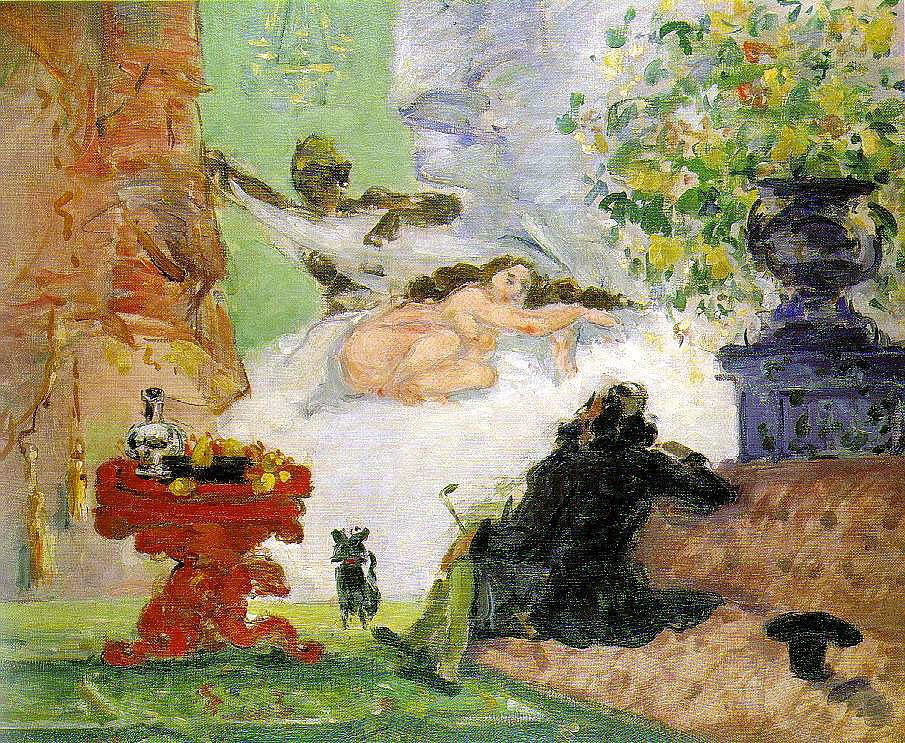
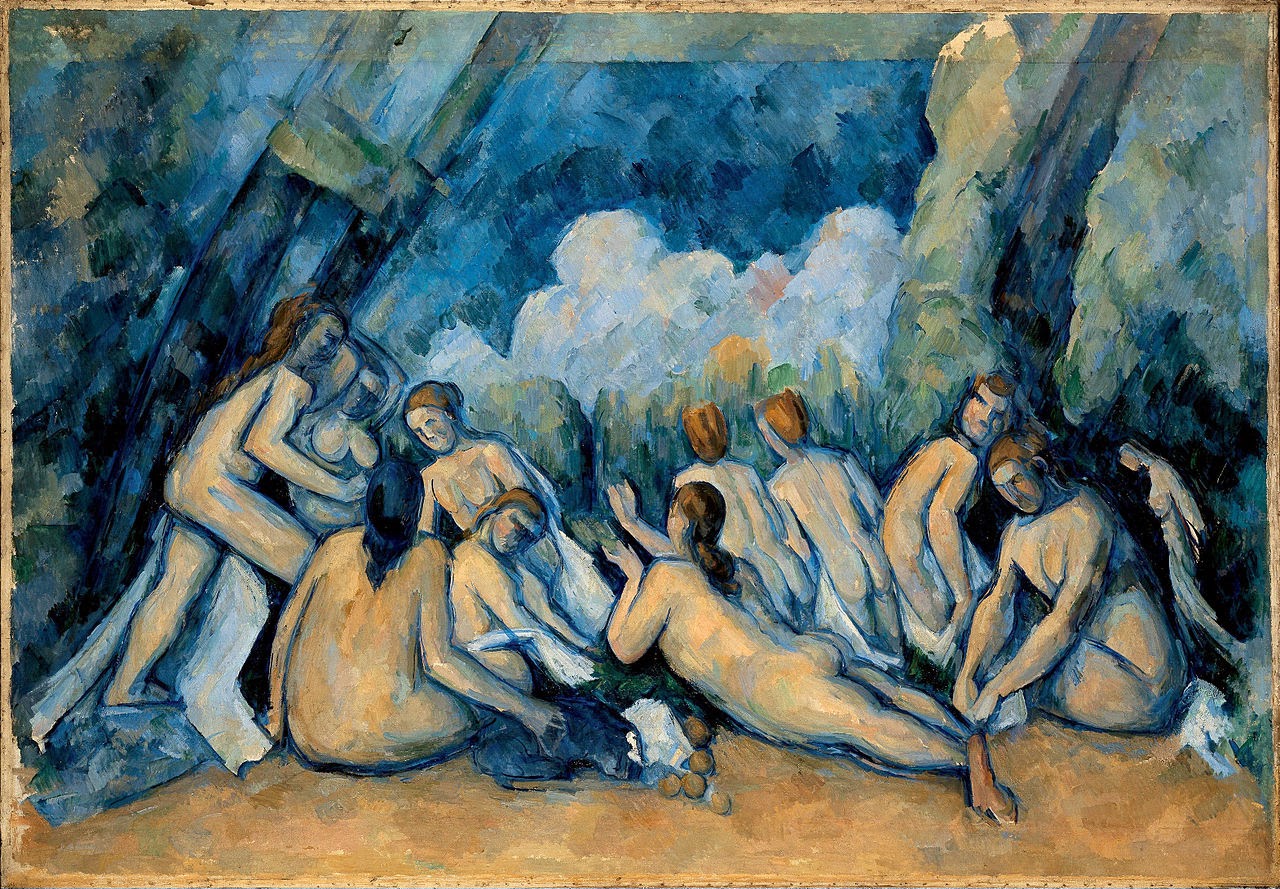
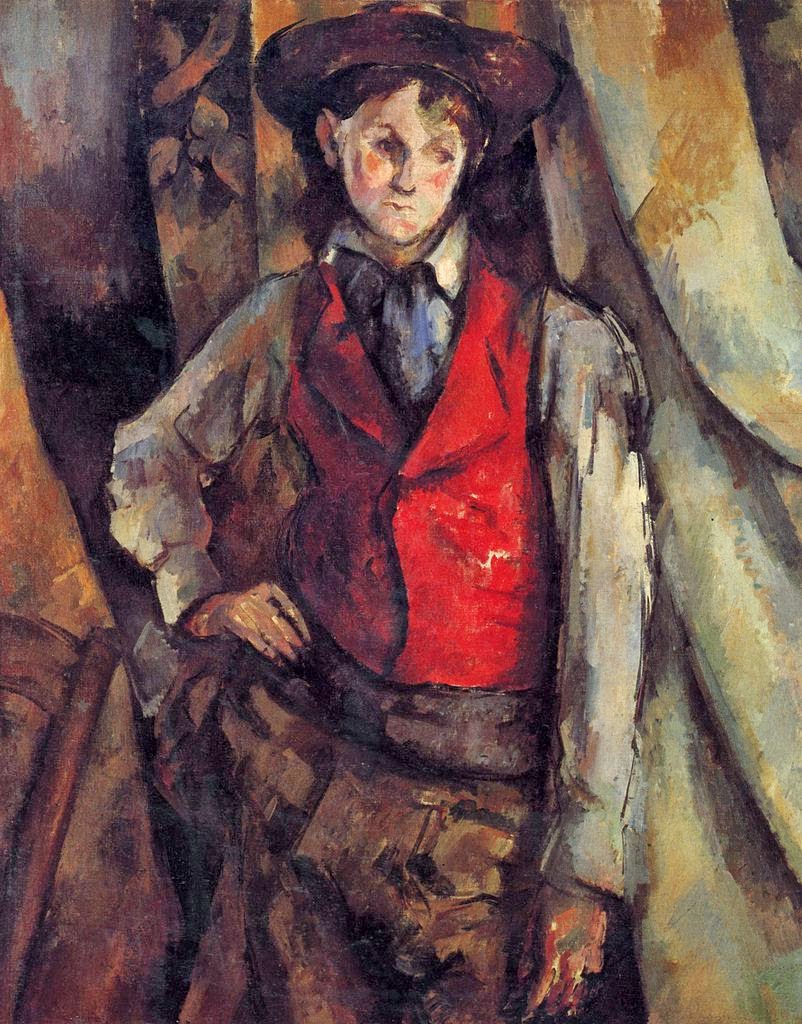

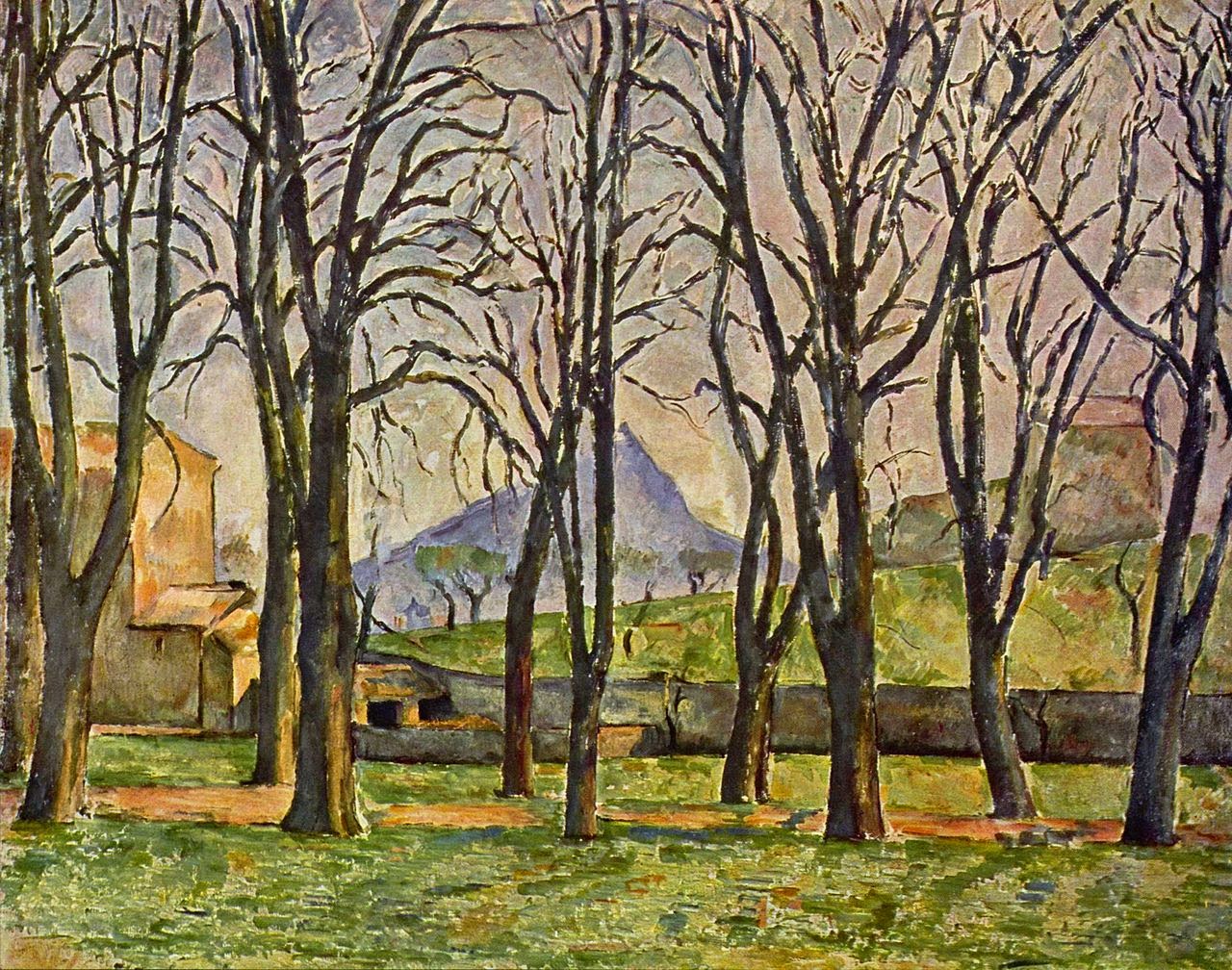
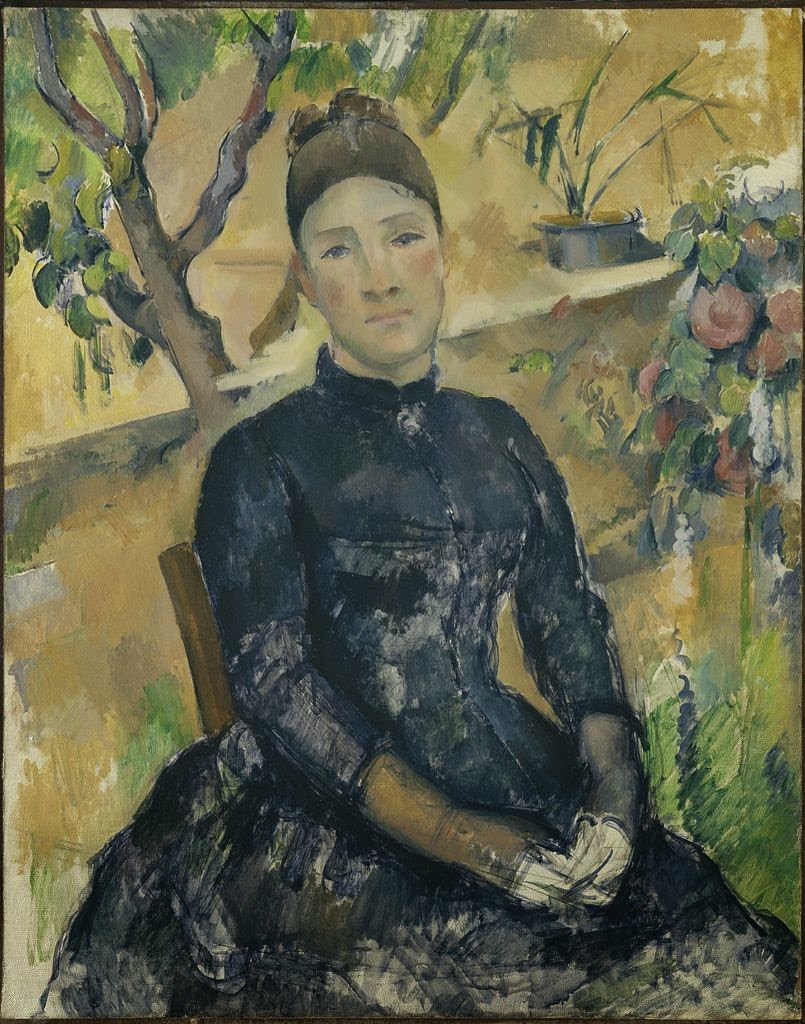
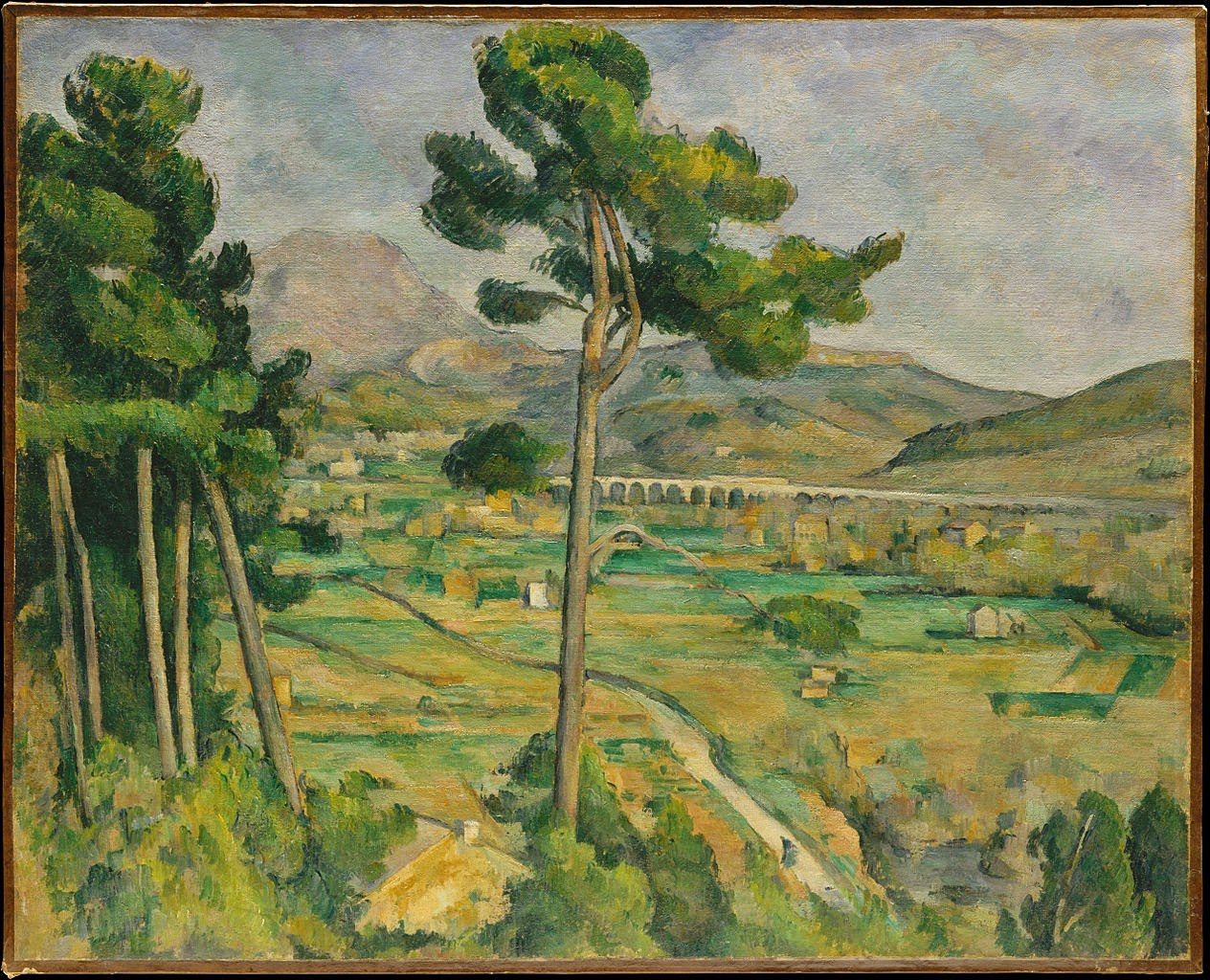
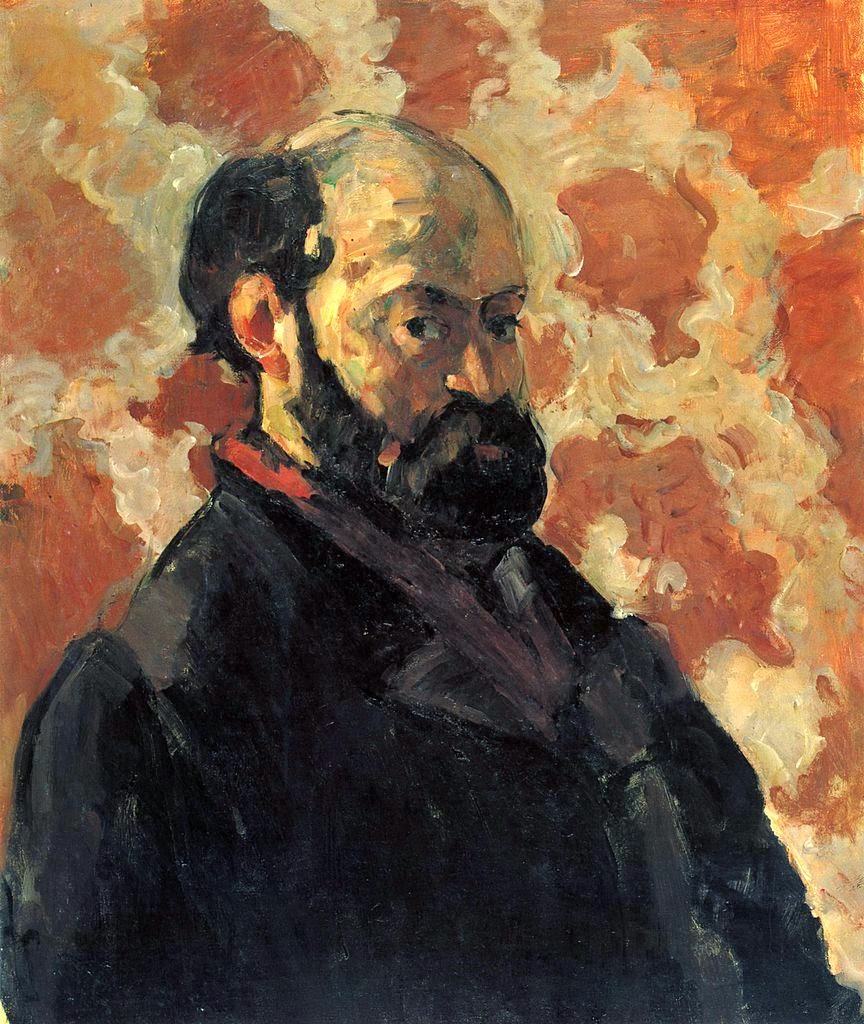
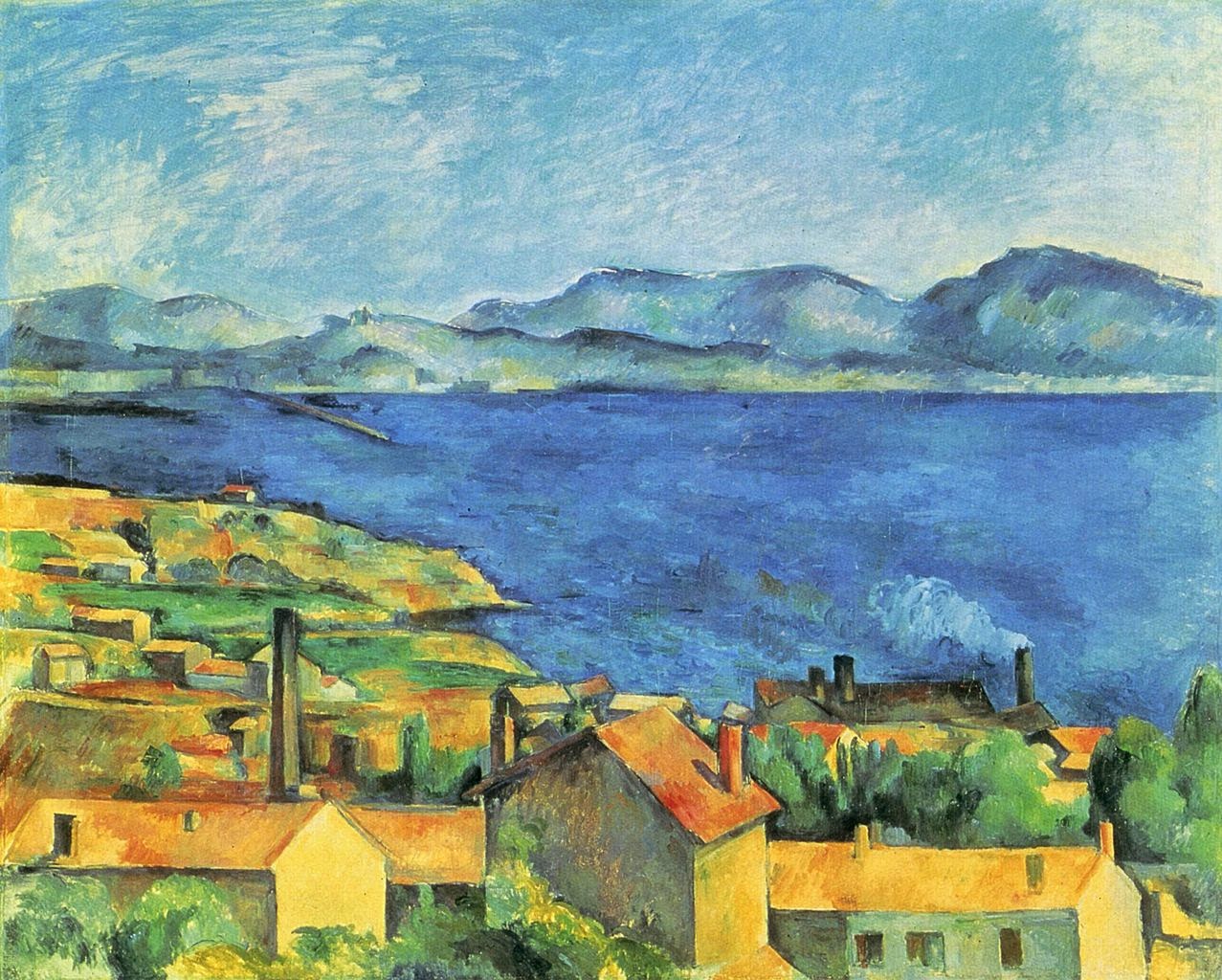
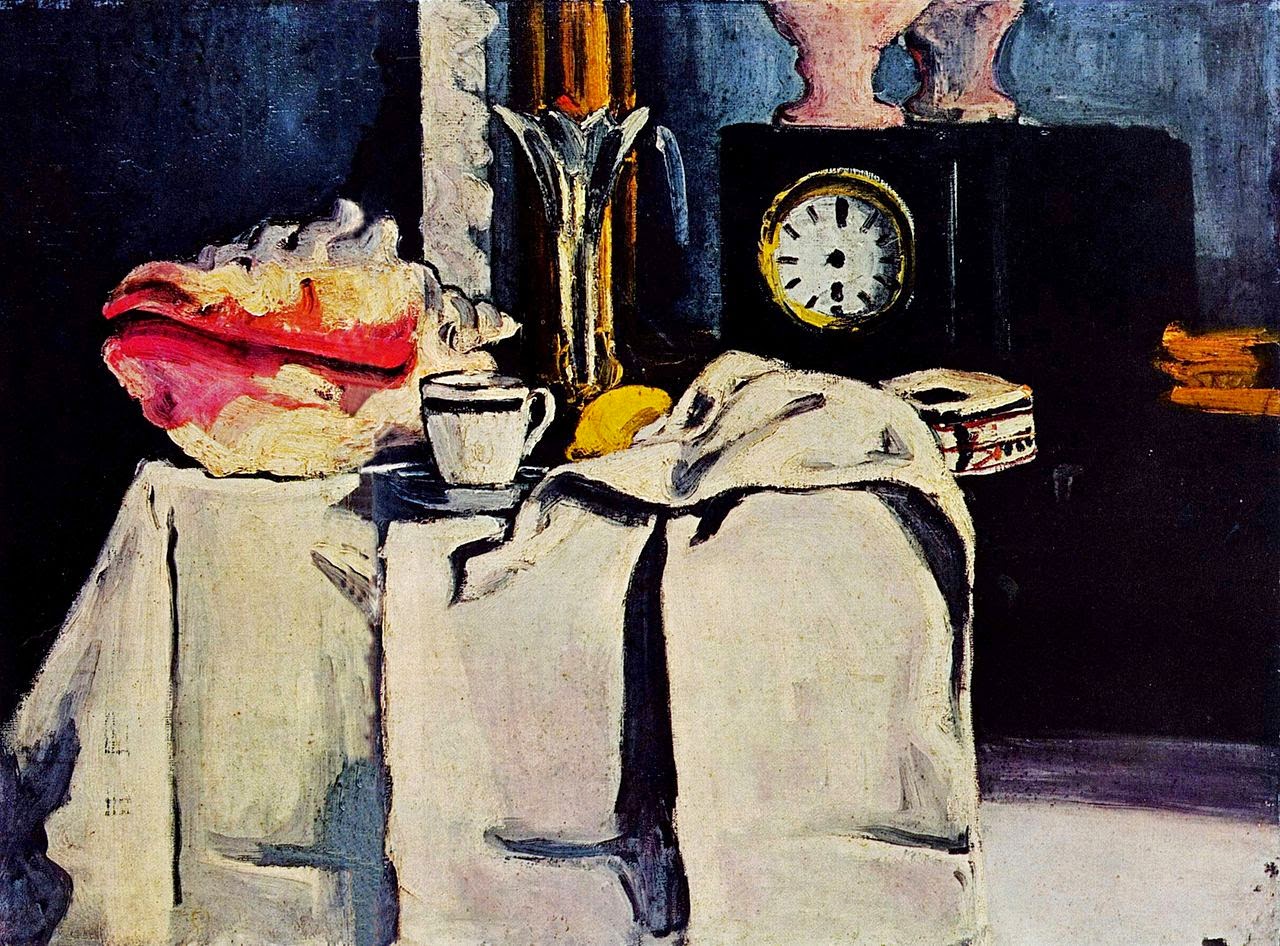
- >> Biography Of Vincent Van Gogh
Vincent Willem van Gogh ( 30 March 1853 – 29 July 1890 ) was a major Post-Impressionist painter. He was a Dutch artist whose work had a far-reaching influence on 20th-century art. His output includes portraits, self portraits, landscapes and still...
- >> Biography Of Pierre Auguste Renoir
Pierre-Auguste Renoir, commonly known as Auguste Renoir ( 25 February 1841 – 3 December 1919 ), was a French artist who was a leading painter in the development of the Impressionist style. As a celebrator of beauty, and especially feminine sensuality,...
- >> Biography Of Henri Matisse
Henri-Émile-Benoît Matisse ( 31 December 1869 – 3 November 1954 ) was a French artist, known for his use of colour and his fluid and original draughtsmanship. He was a draughtsman, printmaker, and sculptor, but is known primarily as a painter. Matisse...
- >> Biography Of Gustav Klimt
Gustav Klimt (July 14, 1862 – February 6, 1918) was an Austrian symbolist painter and one of the most prominent members of the Vienna Secession movement. Klimt is noted for his paintings, murals, sketches, and other objets d'art. Klimt's primary...
- >> Biography Of Edgar Degas
Edgar Degas ( born Hilaire-Germain-Edgar De Gas; 19 July 1834 – 27 September 1917 ) was a French artist famous for his paintings, sculptures, prints, and drawings. He is especially identified with the subject of dance; more than half of his works depict...
Biography
>> Biography of Paul Cézanne

Paul Cézanne ( 1839–1906) was a French artist and Post-Impressionist painter whose work laid the foundations of the transition from the 19th-century conception of artistic endeavour to a new and radically different world of art in the 20th century. Cézanne's often repetitive, exploratory brushstrokes are highly characteristic and clearly recognizable. He used planes of colour and small brushstrokes that build up to form complex fields. The paintings convey Cézanne's intense study of his subjects.
Cézanne can be said to form the bridge between late 19th-century Impressionism and the early 20th century's new line of artistic enquiry, Cubism. Both Matisse and Picasso are said to have remarked that Cézanne "is the father of us all."
Early years and family
The Cézannes lived in the town of Cesana now in West Piedmont, and the surname is probably of Italian origin. Paul Cézanne was born on 19 January 1839 in Aix-en-Provence, in Provence in the South of France. On 22 February, Paul was baptized in the Église de la Madeleine, with his grandmother and uncle Louis as godparents. His father, Louis-Auguste Cézanne (1798–1886), was the co-founder of a banking firm that prospered throughout the artist's life, affording him financial security that was unavailable to most of his contemporaries and eventually resulting in a large inheritance.
Femme au Chapeau Vert (Woman in a Green Hat. Madame Cézanne.) 1894–1895
His mother, Anne Elisabeth Honorine Aubert (1814–1897). was "vivacious and romantic, but quick to take offence". It was from her that Cézanne got his conception and vision of life. He also had two younger sisters, Marie and Rose, with whom he went to a primary school every day.
At the age of ten Paul entered the Saint Joseph school in Aix. In 1852 Cézanne entered the Collège Bourbon (now Collège Mignet), where he met and became friends with Émile Zola, who was in a less advanced class, as well as Baptistin Baille—three friends who came to be known as "les trois inséparables" (the three inseparables). He stayed there for six years, though in the last two years he was a day scholar. In 1857 he began attending the Free Municipal School of Drawing in Aix, where he studied drawing under Joseph Gibert, a Spanish monk. From 1858 to 1861, complying with his father's wishes, Cézanne attended the law school of the University of Aix, while also receiving drawing lessons.
Going against the objections of his banker father, he committed himself to pursuing his artistic development and left Aix for Paris in 1861. He was strongly encouraged to make this decision by Zola, who was already living in the capital at the time. Eventually, his father reconciled with Cézanne and supported his choice of career. Cézanne later received an inheritance of 400,000 francs (£218,363.62) from his father, which rid him of all financial worries.
Cézanne the artist
In Paris, Cézanne met the Impressionist Camille Pissarro. Initially the friendship formed in the mid-1860s between Pissarro and Cézanne was that of master and disciple, in which Pissarro exerted a formative influence on the younger artist. Over the course of the following decade their landscape painting excursions together, in Louveciennes and Pontoise, led to a collaborative working relationship between equals.
Cézanne's early work is often concerned with the figure in the landscape and includes many paintings of groups of large, heavy figures in the landscape, imaginatively painted. Later in his career, he became more interested in working from direct observation and gradually developed a light, airy painting style. Nevertheless, in Cézanne's mature work there is the development of a solidified, almost architectural style of painting. Throughout his life he struggled to develop an authentic observation of the seen world by the most accurate method of representing it in paint that he could find. To this end, he structurally ordered whatever he perceived into simple forms and colour planes. His statement "I want to make of impressionism something solid and lasting like the art in the museums", and his contention that he was recreating Poussin "after nature" underscored his desire to unite observation of nature with the permanence of classical composition.
Life and work
Early years and family
The Cézannes lived in the town of Cesana now in West Piedmont, and the surname is probably of Italian origin. Paul Cézanne was born on 19 January 1839 in Aix-en-Provence, in Provence in the South of France. On 22 February, Paul was baptized in the Église de la Madeleine, with his grandmother and uncle Louis as godparents. His father, Louis-Auguste Cézanne (1798–1886),[6] was the co-founder of a banking firm that prospered throughout the artist's life, affording him financial security that was unavailable to most of his contemporaries and eventually resulting in a large inheritance.
His mother, Anne Elisabeth Honorine Aubert (1814–1897), was "vivacious and romantic, but quick to take offence". It was from her that Cézanne got his conception and vision of life. He also had two younger sisters, Marie and Rose, with whom he went to a primary school every day.
At the age of ten Paul entered the Saint Joseph school in Aix. In 1852 Cézanne entered the Collège Bourbon (now Collège Mignet), where he met and became friends with Émile Zola, who was in a less advanced class, as well as Baptistin Baille—three friends who came to be known as "les trois inséparables" (the three inseparables). He stayed there for six years, though in the last two years he was a day scholar. In 1857 he began attending the Free Municipal School of Drawing in Aix, where he studied drawing under Joseph Gibert, a Spanish monk. From 1858 to 1861, complying with his father's wishes, Cézanne attended the law school of the University of Aix, while also receiving drawing lessons.
Going against the objections of his banker father, he committed himself to pursuing his artistic development and left Aix for Paris in 1861. He was strongly encouraged to make this decision by Zola, who was already living in the capital at the time. Eventually, his father reconciled with Cézanne and supported his choice of career. Cézanne later received an inheritance of 400,000 francs (£218,363.62) from his father, which rid him of all financial worries.
Cézanne the artist
In Paris, Cézanne met the Impressionist Camille Pissarro. Initially the friendship formed in the mid-1860s between Pissarro and Cézanne was that of master and disciple, in which Pissarro exerted a formative influence on the younger artist. Over the course of the following decade their landscape painting excursions together, in Louveciennes and Pontoise, led to a collaborative working relationship between equals.
Cézanne's early work is often concerned with the figure in the landscape and includes many paintings of groups of large, heavy figures in the landscape, imaginatively painted. Later in his career, he became more interested in working from direct observation and gradually developed a light, airy painting style. Nevertheless, in Cézanne's mature work there is the development of a solidified, almost architectural style of painting. Throughout his life he struggled to develop an authentic observation of the seen world by the most accurate method of representing it in paint that he could find. To this end, he structurally ordered whatever he perceived into simple forms and colour planes. His statement "I want to make of impressionism something solid and lasting like the art in the museums", and his contention that he was recreating Poussin "after nature" underscored his desire to unite observation of nature with the permanence of classical composition.
Optical phenomena
Cézanne was interested in the simplification of naturally occurring forms to their geometric essentials: he wanted to "treat nature by the cylinder, the sphere, the cone" (a tree trunk may be conceived of as a cylinder, an apple or orange a sphere, for example). Additionally, Cézanne's desire to capture the truth of perception led him to explore binocular vision graphically, rendering slightly different, yet simultaneous visual perceptions of the same phenomena to provide the viewer with an aesthetic experience of depth different from those of earlier ideals of perspective, in particular single-point perspective. Cézanne's innovations have prompted critics to suggest such varied explanations as sick retinas, pure vision, and the influence of the steam railway.
Exhibitions and subjects
Cézanne's paintings were shown in the first exhibition of the Salon des Refusés in 1863, which displayed works not accepted by the jury of the official Paris Salon. The Salon rejected Cézanne's submissions every year from 1864 to 1869. He continued to submit works to the Salon until 1882. In that year, through the intervention of fellow artist Antoine Guillemet, he exhibited Portrait of Louis-Auguste Cézanne, Father of the Artist, reading 'l'Evénement', 1866 (National Gallery of Art, Washington, D.C.), his first and last successful submission to the Salon.
Still Life with a Curtain (1895) illustrates Cézanne's increasing trend towards terse compression of forms and dynamic tension between geometric figures.
Before 1895 Cézanne exhibited twice with the Impressionists (at the first Impressionist exhibition in 1874 and the third Impressionist exhibition in 1877). In later years a few individual paintings were shown at various venues, until 1895, when the Parisian dealer, Ambroise Vollard, gave the artist his first solo exhibition. Despite the increasing public recognition and financial success, Cézanne chose to work in increasing artistic isolation, usually painting in the south of France, in his beloved Provence, far from Paris.
He concentrated on a few subjects and was equally proficient in each of these genres: still lifes, portraits, landscapes and studies of bathers. For the last, Cézanne was compelled to design from his imagination, due to a lack of available nude models. Like the landscapes, his portraits were drawn from that which was familiar, so that not only his wife and son but local peasants, children and his art dealer served as subjects. His still lifes are at once decorative in design, painted with thick, flat surfaces, yet with a weight reminiscent of Gustave Courbet. The 'props' for his works are still to be found, as he left them, in his studio (atelier), in the suburbs of modern Aix.
Although religious images appeared less frequently in Cézanne's later work, he remained a devout Roman Catholic and said, "When I judge art, I take my painting and put it next to a God-made object like a tree or flower. If it clashes, it is not art."
Cézanne's paintings were not well received among the petty bourgeoisie of Aix. In 1903 Henri Rochefort visited the auction of paintings that had been in Zola's possession and published on 9 March 1903 in L'Intransigeant a highly critical article entitled "Love for the Ugly". Rochefort describes how spectators had supposedly experienced laughing fits, when seeing the paintings of "an ultra-impressionist named Cézanne". Erroneously believing that Cézanne's paintings in fact represented "the art dear to Zola" (Rochefort's Dreyfusard arch-enemy), he drew connections between "Dreyfusard snobs," so-called after the French officer who was accused but innocent of having sold defense plans to Germany, and Zola's supposedly cherished artist, Cézanne. The public in Aix was outraged, and for many days, copies of L'Intransigeant appeared on Cézanne's door-mat with messages asking him to leave the town "he was dishonouring".
Death
One day, Cézanne was caught in a storm while working in the field. Only after working for two hours under a downpour did he decide to go home; but on the way he collapsed. He was taken home by a passing driver. His old housekeeper rubbed his arms and legs to restore the circulation; as a result, he regained consciousness. On the following day, he intended to continue working, but later on he fainted; the model with whom he was working called for help; he was put to bed, and he never left it. He died a few days later, on 22 October 1906 of pneumonia and was buried at the Saint-Pierre Cemetery in his hometown of Aix-en-Provence.
Dark period, Paris, 1861–1870
In 1863 Napoleon III created by decree the Salon des Refusés, at which paintings rejected for display at the Salon of the Académie des Beaux-Arts were to be displayed. The artists of the refused works included the young Impressionists, who were considered revolutionary. Cézanne was influenced by their style but his social relations with them were inept—he seemed rude, shy, angry, and given to depression. His works of this period are characterized by dark colours and the heavy use of black. They differ sharply from his earlier watercolours and sketches at the École Spéciale de dessin at Aix-en-Provence in 1859, and their violence of expression is in contrast to his subsequent works.
In 1866–67, inspired by the example of Courbet, Cézanne painted a series of paintings with a palette knife. He later called these works, mostly portraits, une couillarde ("a coarse word for ostentatious virility"). Lawrence Gowing has written that Cézanne's palette knife phase "was not only the invention of modern expressionism, although it was incidentally that; the idea of art as emotional ejaculation made its first appearance at this moment".
Among the couillarde paintings are a series of portraits of his uncle Dominique in which Cézanne achieved a style that "was as unified as Impressionism was fragmentary". Later works of the dark period include several erotic or violent subjects, such as Women Dressing (c. 1867), The Rape (c. 1867), and The Murder (c. 1867-68), which depicts a man stabbing a woman who is held down by his female accomplice.
Impressionist period, Provence and Paris, 1870–1878
After the start of the Franco-Prussian War in July 1870, Cézanne and his mistress, Marie-Hortense Fiquet, left Paris for L'Estaque, near Marseilles, where he changed themes to predominantly landscapes. He was declared a draft dodger in January 1871, but the war ended the next month, in February, and the couple moved back to Paris, in the summer of 1871. After the birth of their son Paul in January 1872, in Paris, they moved to Auvers in Val-d'Oise near Paris. Cézanne's mother was kept a party to family events, but his father was not informed of Hortense for fear of risking his wrath. The artist received from his father a monthly allowance of 100 francs.
Camille Pissarro lived in Pontoise. There and in Auvers he and Cézanne painted landscapes together. For a long time afterwards, Cézanne described himself as Pissarro's pupil, referring to him as "God the Father", as well as saying: "We all stem from Pissarro." Under Pissarro's influence Cézanne began to abandon dark colours and his canvases grew much brighter.
Leaving Hortense in the Marseille region, Cézanne moved between Paris and Provence, exhibiting in the first (1874) and third Impressionist shows (1877). In 1875, he attracted the attention of the collector Victor Chocquet (de), whose commissions provided some financial relief. But Cézanne's exhibited paintings attracted hilarity, outrage, and sarcasm. Reviewer Louis Leroy said of Cézanne's portrait of Chocquet: "This peculiar looking head, the colour of an old boot might give [a pregnant woman] a shock and cause yellow fever in the fruit of her womb before its entry into the world."
In March 1878, Cézanne's father found out about Hortense and threatened to cut Cézanne off financially, but, in September, he relented and decided to give him 400 francs for his family. Cézanne continued to migrate between the Paris region and Provence until Louis-Auguste had a studio built for him at his home, Jas de Bouffan, in the early 1880s. This was on the upper floor, and an enlarged window was provided, allowing in the northern light but interrupting the line of the eaves. This feature remains today. Cézanne stabilized his residence in L'Estaque. He painted with Renoir there in 1882 and visited Renoir and Monet in 1883.
Mature period, Provence, 1878–1890
In the early 1880s the Cézanne family stabilized their residence in Provence where they remained, except for brief sojourns abroad, from then on. The move reflects a new independence from the Paris-centered impressionists and a marked preference for the south, Cézanne's native soil. Hortense's brother had a house within view of Montagne Sainte-Victoire at Estaque. A run of paintings of this mountain from 1880 to 1883 and others of Gardanne from 1885 to 1888 are sometimes known as "the Constructive Period".
The year 1886 was a turning point for the family. Cézanne married Hortense. In that year also, Cézanne's father died, leaving him the estate purchased in 1859; he was 47. By 1888 the family was in the former manor, Jas de Bouffan, a substantial house and grounds with outbuildings, which afforded a new-found comfort. This house, with much-reduced grounds, is now owned by the city and is open to the public on a restricted basis.
Also in that year Cézanne broke off his friendship with Émile Zola, after the latter used him, in large part, as the basis for the unsuccessful and ultimately tragic fictitious artist Claude Lantier, in the novel L'Œuvre. Cézanne considered this a breach of decorum and a friendship begun in childhood was irreparably damaged.
Final period, Provence, 1890–1906
Pyramid of Skulls, c. 1901, The dramatic resignation to death informs several still life paintings Cézanne made in his final period between 1898 and 1905 which take the skulls as their subject. Today the skulls themselves remain in Cézanne's studio in a suburb of Aix-en-Provence.
Cézanne's idyllic period at Jas de Bouffan was temporary. From 1890 until his death he was beset by troubling events and he withdrew further into his painting, spending long periods as a virtual recluse. His paintings became well-known and sought after and he was the object of respect from a new generation of painters.
The problems began with the onset of diabetes in 1890, destabilizing his personality to the point where relationships with others were again strained. He traveled in Switzerland, with Hortense and his son, perhaps hoping to restore their relationship. Cézanne, however, returned to Provence to live; Hortense and Paul junior, to Paris. Financial need prompted Hortense's return to Provence but in separate living quarters. Cézanne moved in with his mother and sister. In 1891 he turned to Catholicism.
Cézanne alternated between painting at Jas de Bouffan and in the Paris region, as before. In 1895 he made a germinal visit to Bibémus Quarries and climbed Montagne Sainte-Victoire. The labyrinthine landscape of the quarries must have struck a note, as he rented a cabin there in 1897 and painted extensively from it. The shapes are believed to have inspired the embryonic "Cubist" style. Also in that year, his mother died, an upsetting event but one which made reconciliation with his wife possible. He sold the empty nest at Jas de Bouffan and rented a place on Rue Boulegon, where he built a studio.
The relationship, however, continued to be stormy. He needed a place to be by himself. In 1901 he bought some land along the Chemin des Lauves, an isolated road on some high ground at Aix, and commissioned a studio to be built there (now open to the public). He moved there in 1903. Meanwhile, in 1902, he had drafted a will excluding his wife from his estate and leaving everything to his son. The relationship was apparently off again; she is said to have burned the mementos of his mother.
From 1903 to the end of his life he painted in his studio, working for a month in 1904 with Émile Bernard, who stayed as a house guest. After his death it became a monument, Atelier Paul Cézanne, or les Lauves.
Reference Wikipedia
Some Artworks by paul Cezanne

Paul Cézanne, A Modern Olympia, 46 x 55.5 cm, oil on canvas, 1873-1874, Musee d'Orsay, Paris

Paul Cézanne, Bathers, 127 × 196 cm, oil on canvas, 1894-1905, National Gallery, London

Paul Cézanne, Boy in a Red Waistcoat, 89,5 × 72,4 cm, oil on canvas, 1888-1890, National Gallery of Art, Washington, D.C.

Paul Cézanne, Fastnacht (Mardi Gras), 102 × 81 cm, oil on canvas, 1888, Pushkin Museum, Moscow

Paul Cézanne, Jas de Bouffan, view from L'Estaque, 71,12 × 90,17 cm, oil on canvas, 1885-1886, Minneapolis Institute of Art, Minnesota

Paul Cézanne, Madame Cezanne in the Greenhouse, 92,1 × 73 cm, oil on canvas, 1891-1892, Metropolitan Museum of Art

Paul Cézanne, Mont Sainte-Victoire, 46 x 55.5 cm, oil on canvas, 1882-1885, Metropolitan Museum of Art, New York City, Amerika Serikat

Paul Cézanne, self portrait, 66 × 55 cm, oil on canvas, 1875, Private collection

Paul Cézanne, The Bay of Marseilles, view from L'Estaque, 80 × 99,6 cm, oil on canvas, 1885, Art Institute of Chicago, U.S.

Paul Cézanne, The Black Marble Clock, 54 × 73 cm, oil on canvas, 1869-1871, Sammlung Mr. und Mrs. Stavros Niarchos, Athen
- >> Biography Of Vincent Van Gogh
Vincent Willem van Gogh ( 30 March 1853 – 29 July 1890 ) was a major Post-Impressionist painter. He was a Dutch artist whose work had a far-reaching influence on 20th-century art. His output includes portraits, self portraits, landscapes and still...
- >> Biography Of Pierre Auguste Renoir
Pierre-Auguste Renoir, commonly known as Auguste Renoir ( 25 February 1841 – 3 December 1919 ), was a French artist who was a leading painter in the development of the Impressionist style. As a celebrator of beauty, and especially feminine sensuality,...
- >> Biography Of Henri Matisse
Henri-Émile-Benoît Matisse ( 31 December 1869 – 3 November 1954 ) was a French artist, known for his use of colour and his fluid and original draughtsmanship. He was a draughtsman, printmaker, and sculptor, but is known primarily as a painter. Matisse...
- >> Biography Of Gustav Klimt
Gustav Klimt (July 14, 1862 – February 6, 1918) was an Austrian symbolist painter and one of the most prominent members of the Vienna Secession movement. Klimt is noted for his paintings, murals, sketches, and other objets d'art. Klimt's primary...
- >> Biography Of Edgar Degas
Edgar Degas ( born Hilaire-Germain-Edgar De Gas; 19 July 1834 – 27 September 1917 ) was a French artist famous for his paintings, sculptures, prints, and drawings. He is especially identified with the subject of dance; more than half of his works depict...
